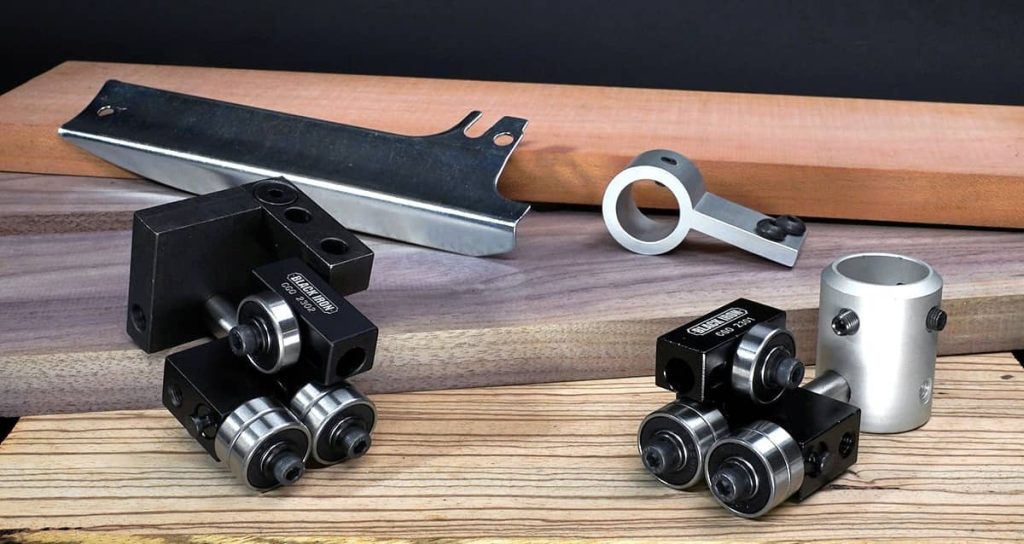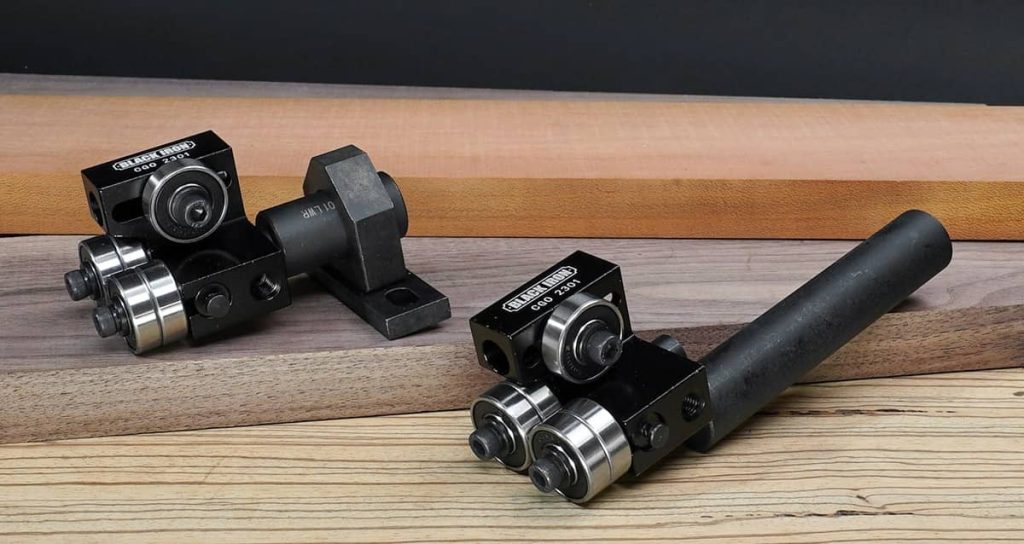Your bandsaw’s guide system plays a major role in how smooth and accurate each cut turns out. Blade guides keep the blade steady, reduce unwanted movement, and improve cut quality. The two main styles available today are guide blocks and bearing guides, each offering its own benefits. Understanding how they differ will help you decide which setup best suits your cutting style and maintenance routine.
Understanding How Bandsaw Guides Work
Bandsaw blade guides keep the blade aligned during operation. They consist of two parts:
-
Side guides that limit sideways blade movement
-
A thrust bearing that prevents the blade from being pushed backward
These components help control blade motion for consistent, precise cuts. The difference between guide blocks and bearing systems mainly lies in how they manage friction and support the blade.
What Are Guide Blocks?
Guide blocks are the original and most common type of bandsaw guide. Made from steel, ceramic, or composite materials, they sit snugly against both sides of the blade. Their simple design makes them dependable, easy to maintain, and ideal for general woodworking or metalworking tasks.
Advantages of Guide Blocks
-
Straightforward design: Easy to install, use, and replace
-
Affordable: Less expensive than bearing-based systems
-
Durable materials: Ceramic blocks resist friction and heat
-
Customizable: Can be made from hardwood or other shop materials

Disadvantages of Guide Blocks
Guide blocks create more friction than bearings, especially in steel or composite versions. They may require more frequent adjustment and produce more noise during long cuts. Over time, this friction can shorten blade life or reduce cut smoothness.
What Are Bearing Guides?
Bearing guides, sometimes called roller guides, use ball bearings that rotate with the blade. This design reduces friction and allows for smoother, quieter operation. Bearing systems are often installed on newer bandsaws or added as upgrades for greater precision and performance.
Advantages of Bearing Guides
-
Low friction: Bearings move with the blade, minimizing heat buildup
-
Smoother performance: Excellent for long or repetitive cuts
-
Extended blade life: Less friction helps maintain sharpness
-
Consistent accuracy: Keeps blade tracking steady for clean cuts
Disadvantages of Bearing Guides
Bearing guides tend to cost more than block systems. They require regular cleaning to prevent sawdust or resin buildup, and some setups can be trickier to fine-tune. Bearings can also wear out or seize if neglected.

Comparison Table
| Feature | Guide Blocks | Bearing Guides |
|---|---|---|
| Friction | Moderate to high (lower in ceramic) | Very low |
| Heat | Higher | Lower |
| Cost | More affordable | Higher investment |
| Durability | Good (ceramic lasts longer) | Good but can wear with time |
| Noise | Louder | Quieter |
| Maintenance | Simple and quick | Requires periodic cleaning |
| Best For | General woodworking or hobby use | Precision cutting and resawing |
Choosing the Right Type
Your ideal system depends on how you use your bandsaw.
Choose Guide Blocks if:
-
You want an affordable, low-maintenance setup
-
You mostly do general cutting
-
You like easy replacements and adjustments
-
You value the heat resistance of ceramic materials
Choose Bearing Guides if:
-
You need smooth, quiet operation for precision work
-
You often resaw or make long rip cuts
-
You want to extend blade life and reduce friction
-
You can perform occasional cleaning and inspection

Maintenance for Reliable Performance
Keeping your guide system clean and well-adjusted helps maintain accuracy. For guide blocks, clean regularly and replace them when worn or grooved. For bearing guides, check that bearings spin freely, remove dust and debris, and replace any that stick or seize. Proper maintenance ensures long-lasting performance and smooth cutting.
Where to Find Replacement and Upgrade Kits
Websites such as Sawblade.com and Guidekits.com provide a wide range of replacement and upgrade kits for most saw models. Their compatibility tools make it easy to find the correct match. Many kits include carbide, ceramic, or bearing components built for long service life and accurate cutting.
Read the Kasto Bandsaws Manual Overview
Interested in learning how to get the best performance from your Kasto machine? Check out “Kasto Bandsaws Manual Overview: Setup, Safety, and Performance Tips“. This guide explains essential setup procedures, safe operating practices, and maintenance advice to help you achieve consistent and accurate cutting results.
Keeping Your Bandsaw Performing Smoothly
Both guide block and bearing systems can deliver excellent performance when maintained properly. The right choice depends on your budget, cutting style, and maintenance preferences. Guide blocks offer simple reliability, while bearing systems provide smoother motion and precision. With regular care and adjustment, your bandsaw will continue cutting accurately and efficiently for years to come.